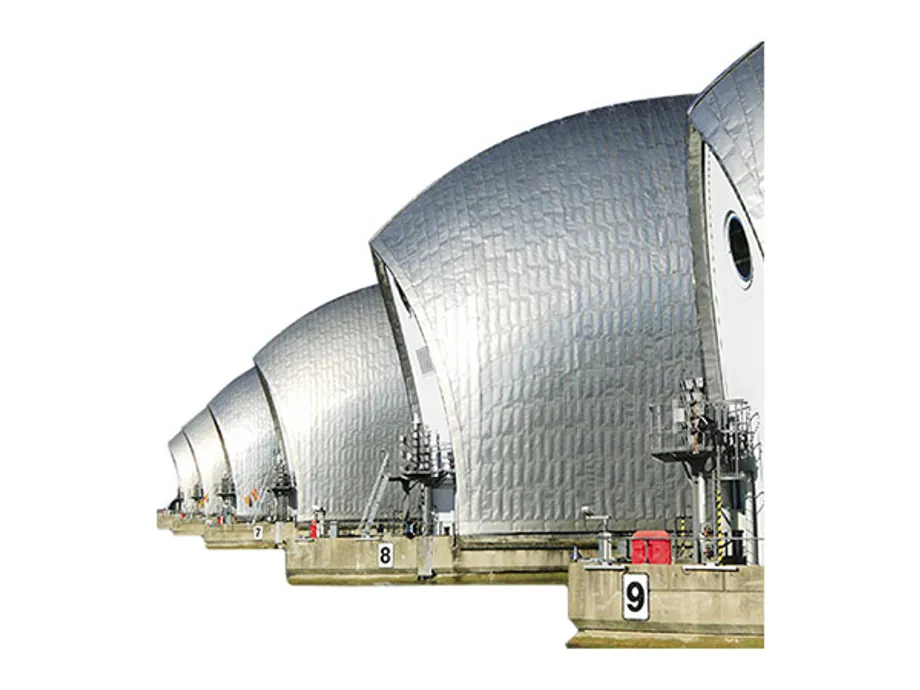Flood defence
Flood control or defence refers to all methods used to reduce or prevent the detrimental effects of flood waters.
Some methods of flood control have been practised since ancient times. These methods include planting vegetation to retain extra water, terracing hillsides to slow flow downhill, and the construction of diversion canals (man-made channels to divert floodwater).
Other techniques include the construction of levees, lakes, dams, flood barriers, reservoirs, river and coastal defences, temporary perimeter barriers and retention ponds which hold extra water during times of flooding.
Image of the Thames Barrier
The Thames Barrier site, at New Charlton, downstream of central London, was chosen because of the relative straightness of the banks, and because the underlying river chalk was strong enough to support the barrier.
Operational since 1982, its purpose is to prevent the floodplain of all but the easternmost boroughs of Greater London from being flooded by exceptionally high tides and storm surges moving up from the North Sea.
Built across a 520 metre wide stretch of river, the barrier divides the river into four 61 metre and two 30 metre navigable spans. There are also four smaller non-navigable channels.

